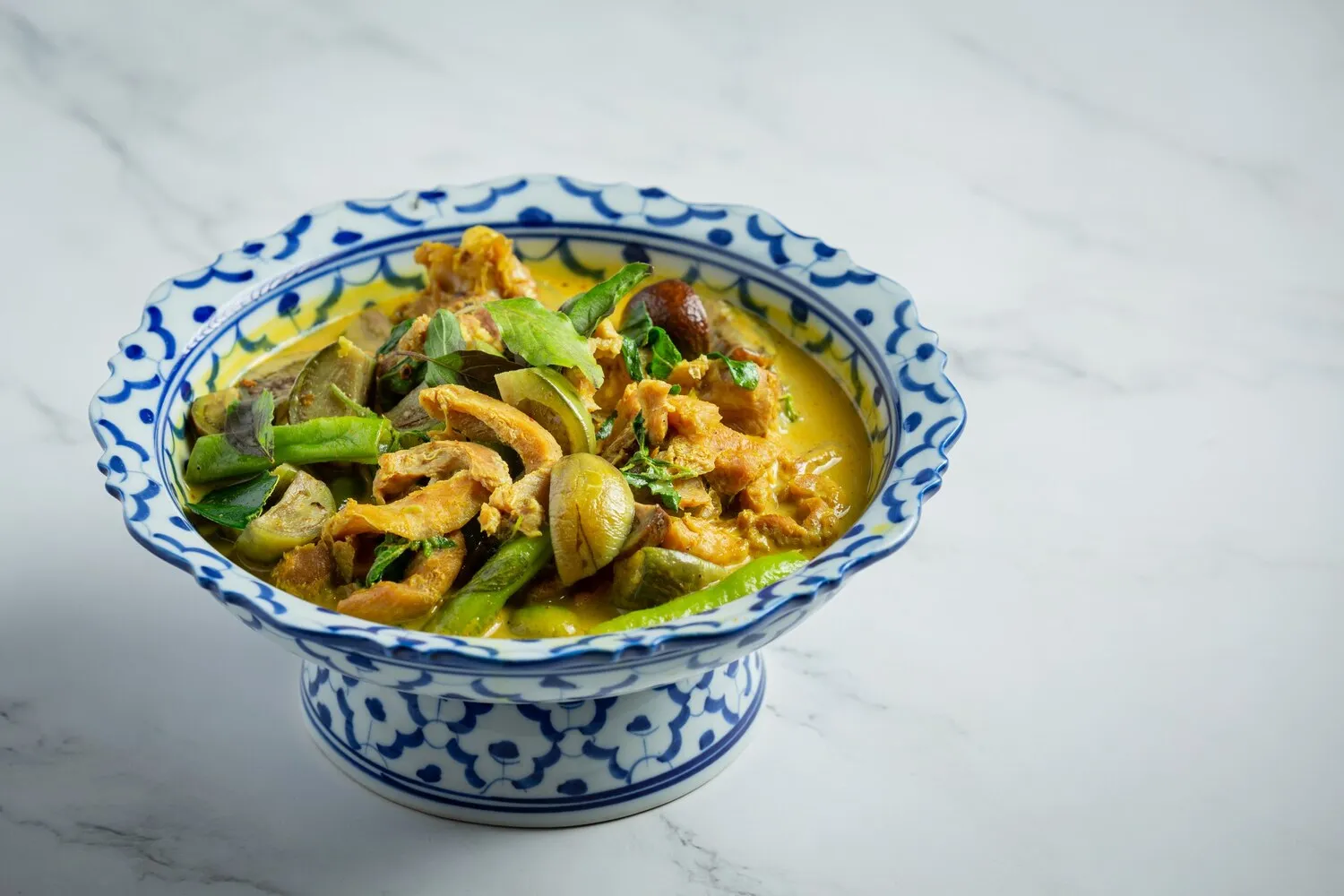
Green Curry
Authentic green curry made with coconut milk, bamboo shoots, bell peppers, basil and green curry paste. Served with rice.
Nutrition Facts
* The % Daily Value (DV) tells you how much a nutrient in a serving of food contributes to a daily diet. 2,000 calories a day is used for general nutrition advice.
Thai Express Restaurant Gatineau
Thai cuisine has been influenced by neighboring countries like India, China, and Malaysia, as well as by European traders. Curry dishes, originally from India, were adapted to local ingredients and tastes, leading to the creation of unique Thai curries like green curry. Green curry distinguishes itself through the use of fresh green chilies and other green ingredients.
Green curry is a staple dish in Thai cuisine, reflecting the country's emphasis on balancing flavors and using fresh, local ingredients. It's commonly enjoyed as a family meal or served at gatherings and restaurants.
Regional Variations
While the basic recipe remains consistent, regional variations exist in the level of spice, sweetness, and the specific vegetables or proteins used. Some regions may prefer a more intense chili flavor, while others might lean towards a sweeter or creamier sauce.
Ingredient Freshness
The quality of the ingredients, especially the green chilies and herbs, significantly impacts the flavor of the curry. Using fresh, high-quality ingredients is crucial for achieving the authentic taste.
Social Dining
Like many Thai dishes, green curry is often shared among a group of people, promoting a sense of community and togetherness. It is typically served with steamed jasmine rice.
Green curry is characterized by its creamy, spicy, and slightly sweet flavor profile.
The base of the flavor comes from green chilies, which provide heat, balanced by the sweetness of coconut milk and palm sugar. Fish sauce adds a savory, umami depth. Galangal, lemongrass, kaffir lime leaves, and coriander roots contribute citrusy and aromatic notes. Bamboo shoots offer a slightly bitter and crunchy texture, while bell peppers introduce a subtle sweetness and color. Basil adds a fresh, anise-like aroma and flavor.
Pounding the Curry Paste
While pre-made curry pastes are convenient, making your own from scratch will result in a fresher, more vibrant flavor. Use a mortar and pestle to thoroughly grind the ingredients for the best results.
Balancing the Flavors
Taste and adjust the curry as you cook it. You may need to add more fish sauce for saltiness, palm sugar for sweetness, or lime juice for acidity to achieve the desired balance.
Coconut Milk Quality
Use full-fat coconut milk for a richer, creamier sauce. The quality of the coconut milk significantly impacts the overall taste and texture of the curry. Avoid using 'lite' or low-fat coconut milk as it can make the sauce watery.
Cooking the Coconut Milk
Gently simmer the coconut milk until the oil separates. This step helps to release the aromatic compounds and create a richer flavor base for the curry.
Explore additional Curry dishes and restaurants
Explore CurryDiscover top dining spots and culinary experiences in Gatineau.
Explore GatineauLearn more about the food culture, restaurant scene, and culinary heritage of Canada.
Explore Canada